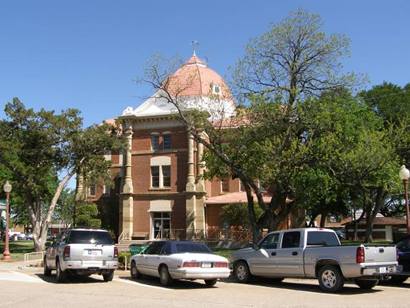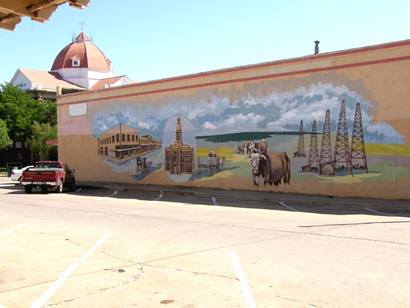Henrietta, Texas. (original) (raw)

Annual Event: Clay County Pioneer Reunion and Rodeo (September)
Photo courtesy Barclay Gibson, April 2009
History in a Pecan Shell
When Cooke County was separated into two counties, the day before Christmas 1857, Clay County needed a seat of government. The centrally located town of Henrietta is the result � even though no one knows for sure the origin of the name. One stretched (but somewhat believable) theory is that since the county was named after Henry Clay, a feminized version of his first name was in order. (Ships, cities, and countries were once referred to as feminine.)
There wasn�t a fight for county seat, since it was the only real contender for the title. With just a store and about ten residences, and less than 110 people, tiny Henrietta had nowhere to go but up. In 1860, it was the North Texas frontier. Although it was granted a post office in 1862, it was still a wild place and open to Indian attacks.
Abandonment and Resettlement
When the Civil War demanded the troops that were stationed there, residents moved into Cooke and Montague counties, and by 1862 Clay County was, for all intents and purposes, a ghost county. Indians had reportedly left "strange� markings on the town buildings, prompting a purifying fire by troops. This may have sent the spirits on their way, but now the town would be starting from scratch if and when people decided to resettle here. One attempted resettlement in 1865 was a little too early. Several members of the group were killed and the rest retreated. A second attempt by a Quaker group (1870) met a worse fate. The leader, Goodleck Koozer was killed and his wife and daughters taken as captives (but eventually released). That same year fifty soldiers and 300 Kiowas fought a pitched battle in the foundations of the former town.
In time, settlers returned and the post office was reopened in July of 1874. The isolation of the settlers made the town the judicial �capital� of the region. The railroad arrived in 1882 (the Fort Worth and Denver City) with the Gainesville, Henrietta and Western Railway becoming the towns second rail connection in 1887. Travelers would arrive by train and then ride stages to their final destinations. During the buffalo slaughter of the 1880s, Henrietta was an outfitting center and a shipping center for the bones of the slain animals.
During this period, Henrietta, dwarfed the town of Wichita Falls. Clay County's first permanent courthouse was built in 1884 and is still standing. By 1890 the population was over 2,000 and the town had all the amenities of a large town � and then some � including hotels, five churches, two newspapers, and a 400-seat Opera House.
The population stayed about the same, but dropped slightly during the Great Depression to just over 2,000. Growth was slow, and by the 1970s it had peaked with 3,600 people calling Henrietta home. By 1990 the population had declined to 2,896, growing to 3,264 for the 2000 census.

Henrietta Landmarks/Attractions
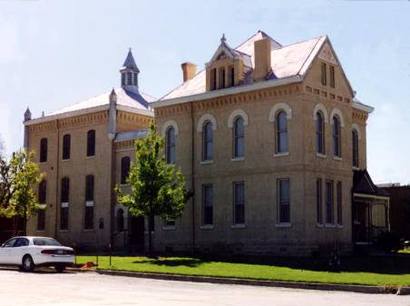
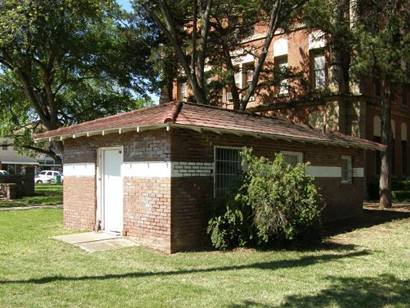
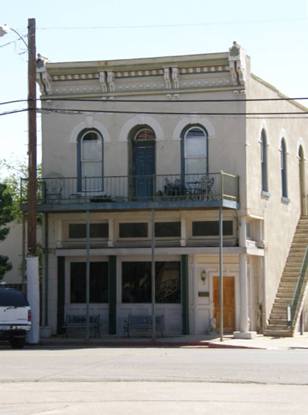

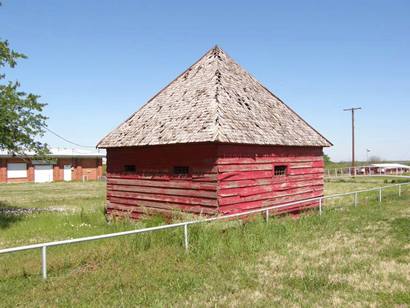
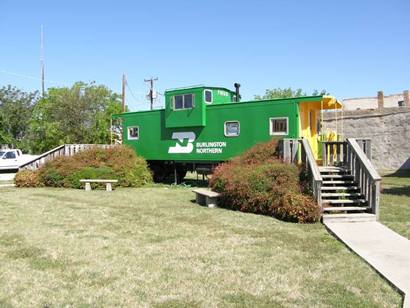
Henrietta Chamber of Commerce Office
Photo courtesy Barclay Gibson, April 2009
Texas Escapes, in its purpose to preserve historic, endangered and vanishing Texas, asks that anyone wishing to share their local history, stories, landmarks and recent/vintage photos, please contact us.
